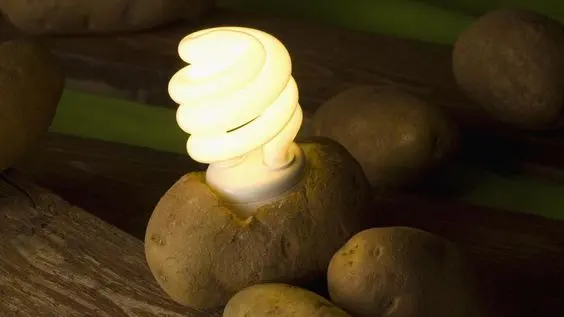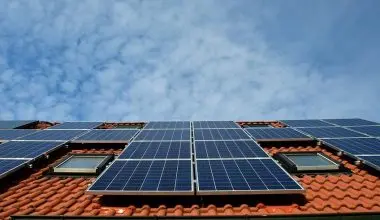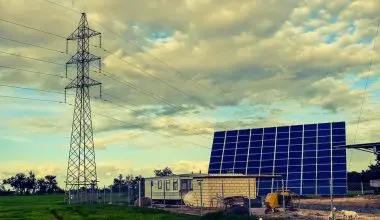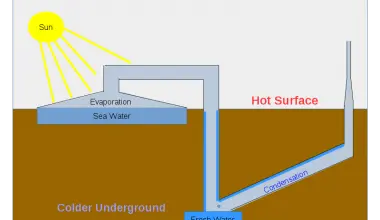It might be a surprise for a lot of people who aren’t into science much but potatoes can produce electricity. Electricity is produced when an electric current is generated due to the attraction between electrons and protons (when an electric charge moves from negative terminal to the positive terminal).
Like various forms of energy resources, potatoes can produce electricity for us too. There are many people using the potential of potato to make green electric energy which can run items such as a clock and small bulbs.
Potato is a component of our natural diet. It gives us energy by providing us with starch. Starch helps to produce glucose and carry out aerobic respiration.
Aerobic respiration generates energy in the form of ATP for us and ATP is then used in a variety of ways throughout our body.
Potatoes contain salts which are also required for the normal homeostatic (chemical and physical balancing) function of our body. Both starch and salts, along with water, are the reason why potato is able to produce ample amount of electricity.
Electricity is produced when two different metals are inserted between the potato and a salt bridge is created. The salt bridge is formed as salt releases ions which flow from one metal to another generating an electrical current.
Steps in producing electricity from a potato:
You’ll require the following:
- A Potato
- Two wires
- Two different types of metals ( commonly used metals are zinc and copper)
You can get all this equipment in the following kit!
After procuring the equipment, you will go on to build your very own electrical circuit using a potato by following these steps:
- Insert the two different metals into the potato. The metals should be separated as far as possible from each other in order to produce higher voltage by allowing greater amount of ions to travel between those two metals.
- Attach one end of the wire to one metal (zinc nail) and the other end of that wire to the negative end (shown by black colored terminal) of the light bulb.
- Then connect the wire to the other metal (copper) from one end and the other end to the positive terminal (Shown by the red colored terminal) of the light bulb.
- The completion of the circuit will eventually produce electricity to light up the bulb.
How does potato generate electricity?
When the circuit is completed; Zinc metal loses electrons through the process of oxidation, those electrons move through the wire to the light bulb, and then finally electrons move from the light bulb to the Copper metal.
The copper gains the electron released by zinc and gets reduced (chemically). The positive current flows in equal and opposite direction to the electron.
The wires are used to create a salt bridge and allow the movement of electrons and protons from one part of the circuit to the other.
Water is another important component as it acts as an electrolyte. It will keep on producing a constant electrical current until the reactants run out.
It is very astounding that a crop like potato can be used to produce electricity. The potato can light up a bulb and has the ability to run a wall clock as well.
Studies conducted have also shown that potato have the ability to power LED rooms. Studies also suggest that boiled potato is able to produce greater electrical energy as compared to a normal potato.
As potato is one of the most abundant crops in the world, it can be used as alternative power resources in remote areas where providing electricity can be a nuisance. If the potential for potato is carefully exploited, it may well replace fossil fuels in the future.
P.S: If you were to prove this and run a wall clock using a potato, you should take a look at the video above. Just replace the light bulb with a wall clock and you’re good to go!







4 comments
Wow that was unusual. I just wrote an very long comment but after I clicked submit my comment didn’t show up. Grrrr… well I’m not writing all that over again. Anyhow, just wanted to say superb blog!
Hmm, Strange. Sorry to have missed out on your comment! Thanks for the compliment.
I really wanted to write a message to be able to say thanks to you for the wonderful guidelines you are writing at this site. My time-consuming internet look up has at the end been paid with reputable content to exchange with my co-workers. I ‘d say that most of us visitors actually are unequivocally endowed to dwell in a wonderful website with many brilliant people with valuable points. I feel pretty fortunate to have seen your entire webpage and look forward to many more thrilling minutes reading here. Thanks once again for all the details.
We highly appreciate your kind comment. Hope to see you coming back again!
Much obliged,
Ahsen.